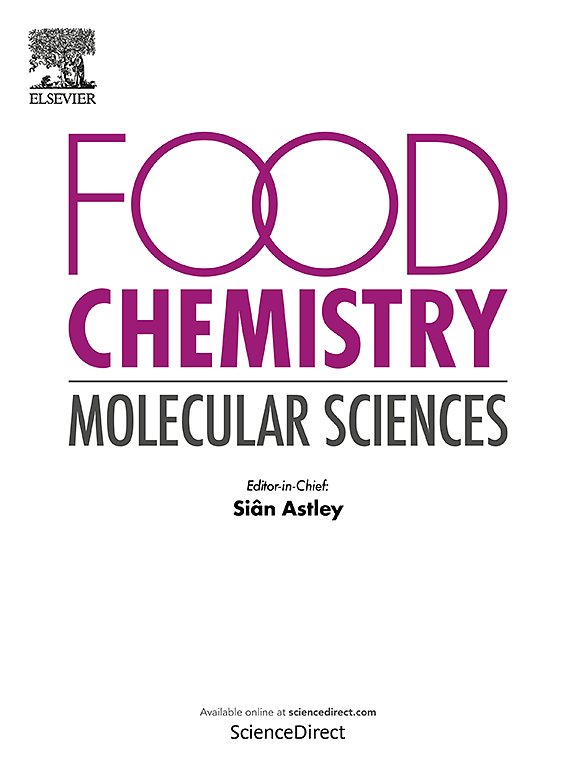Agrobacterium mediated manipulation of the expression of an polysaccharide biosynthetic phosphoglucose isomerase gene to improve polysaccharide production in Sanghuangporus vaninii
IF 4.1
Q2 FOOD SCIENCE & TECHNOLOGY
引用次数: 0
Abstract
The Sanghuangporus vaninii polysaccharide plays diverse biological roles in enhancing human health; nonetheless, the fundamental process of polysaccharide synthesis in S. vaninii remains unclear. Phosphoglucose isomerase (PGI) is a key enzyme in polysaccharide synthesis, which can affect the energy metabolism and polysaccharide synthesis of organisms. To elucidate the potential role of PGI in S. vaninii polysaccharide metabolism, the interference transformation system of SvPgi was constructed to study the related functions. It was found that the interference with the expression of SvPgi could increase the polysaccharide content of mycelium by 31.24 % and 41.28 %, and the extracellular polysaccharide content by 83.57 % and 91.83 %, respectively. In addition, regulation of SvPgi expression resulted in significant changes in polysaccharide metabolic pathway, monosaccharide composition and cell wall component content, suggesting that SvPgi could be an ideal molecular target for engineering high-yielding polysaccharide strains. Our findings reveal that SvPgi acts as a critical metabolic switch balancing mycelial growth and polysaccharide biosynthesis in S. vaninii. While RNAi-mediated silencing of SvPgi significantly enhances polysaccharide yields, the concomitant biomass reduction underscores the need for refined regulatory approaches to decouple growth from biosynthesis. This mechanistic insight paves the way for future strain engineering targeting PGI activity under controlled conditions.
农杆菌介导的多糖生物合成磷酸葡萄糖异构酶基因表达调控桑黄孢多糖产量的研究
桑黄茯苓多糖具有多种促进人体健康的生物学作用;尽管如此,金银花多糖合成的基本过程仍不清楚。磷酸葡萄糖异构酶(PGI)是多糖合成中的关键酶,影响着生物体的能量代谢和多糖合成。为了阐明PGI在茴香多糖代谢中的潜在作用,我们构建了SvPgi的干扰转化体系,研究其相关功能。结果发现,干扰SvPgi的表达可使菌丝体多糖含量分别提高31.24%和41.28%,胞外多糖含量分别提高83.57%和91.83%。此外,调控SvPgi的表达可导致多糖代谢途径、单糖组成和细胞壁成分含量发生显著变化,表明SvPgi可能是工程高产多糖菌株的理想分子靶点。我们的研究结果表明,SvPgi是平衡葡萄球菌菌丝生长和多糖生物合成的关键代谢开关。虽然rnai介导的SvPgi沉默显著提高了多糖产量,但随之而来的生物量减少强调了需要完善的调节方法来将生长与生物合成分离。这种机制的洞察力为未来在受控条件下针对PGI活性的应变工程铺平了道路。
本文章由计算机程序翻译,如有差异,请以英文原文为准。
求助全文
约1分钟内获得全文
求助全文
来源期刊

Food Chemistry Molecular Sciences
Agricultural and Biological Sciences-Food Science
CiteScore
6.00
自引率
0.00%
发文量
83
审稿时长
82 days
期刊介绍:
Food Chemistry: Molecular Sciences is one of three companion journals to the highly respected Food Chemistry.
Food Chemistry: Molecular Sciences is an open access journal publishing research advancing the theory and practice of molecular sciences of foods.
The types of articles considered are original research articles, analytical methods, comprehensive reviews and commentaries.
Topics include:
Molecular sciences relating to major and minor components of food (nutrients and bioactives) and their physiological, sensory, flavour, and microbiological aspects; data must be sufficient to demonstrate relevance to foods and as consumed by humans
Changes in molecular composition or structure in foods occurring or induced during growth, distribution and processing (industrial or domestic) or as a result of human metabolism
Quality, safety, authenticity and traceability of foods and packaging materials
Valorisation of food waste arising from processing and exploitation of by-products
Molecular sciences of additives, contaminants including agro-chemicals, together with their metabolism, food fate and benefit: risk to human health
Novel analytical and computational (bioinformatics) methods related to foods as consumed, nutrients and bioactives, sensory, metabolic fate, and origins of foods. Articles must be concerned with new or novel methods or novel uses and must be applied to real-world samples to demonstrate robustness. Those dealing with significant improvements to existing methods or foods and commodities from different regions, and re-use of existing data will be considered, provided authors can establish sufficient originality.
 求助内容:
求助内容: 应助结果提醒方式:
应助结果提醒方式:


